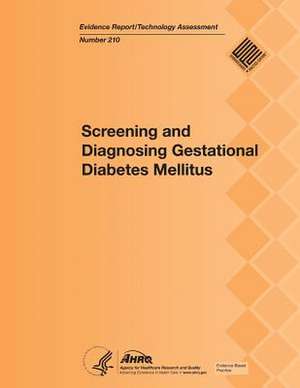Screening and Diagnosing Gestational Diabetes Mellitus
Autor U. S. Department of Heal Human Services, Agency for Healthcare Resea And Qualityen Limba Engleză Paperback
Preț: 202.06 lei
Preț vechi: 212.70 lei
-5% Nou
Puncte Express: 303
Preț estimativ în valută:
38.66€ • 40.37$ • 31.93£
38.66€ • 40.37$ • 31.93£
Carte disponibilă
Livrare economică 25 martie-08 aprilie
Preluare comenzi: 021 569.72.76
Specificații
ISBN-13: 9781483943923
ISBN-10: 1483943925
Pagini: 330
Dimensiuni: 216 x 279 x 18 mm
Greutate: 0.77 kg
Editura: CREATESPACE
ISBN-10: 1483943925
Pagini: 330
Dimensiuni: 216 x 279 x 18 mm
Greutate: 0.77 kg
Editura: CREATESPACE
